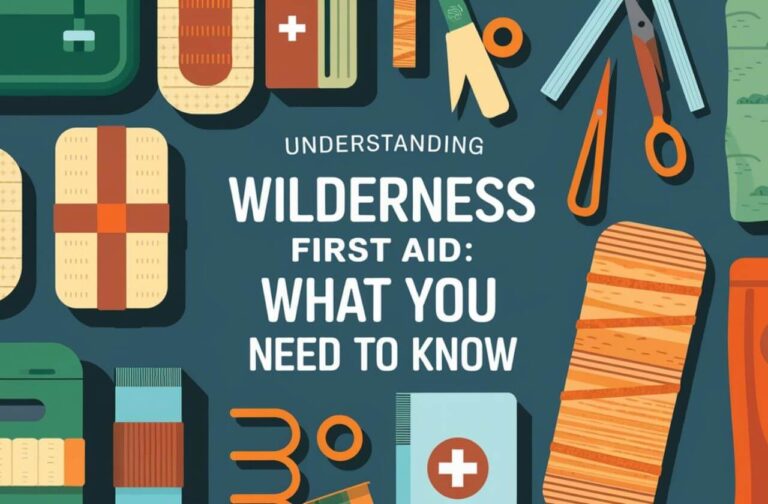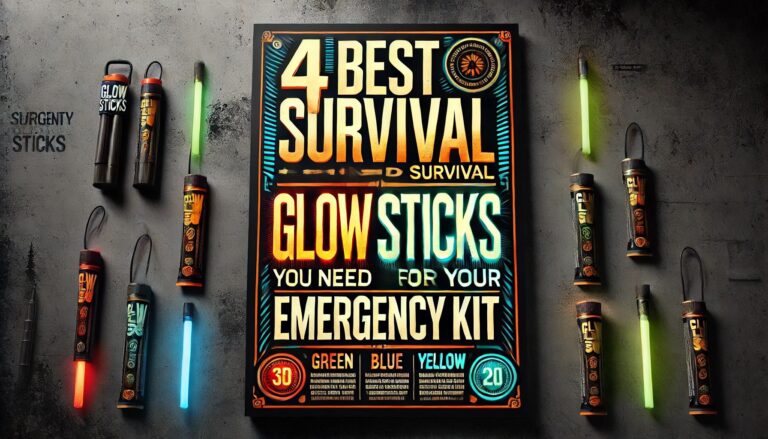How to Deal With Wildlife in a Survival Situation
A survival situation may be bad enough, but dealing with wildlife in a survival situation can add another element of danger. Understanding how to navigate encounters with wildlife can be the difference between safety and imminent harm.
You need to stay calm and observe the animals around you, as their behavior can reveal much about their intentions. Keep your distance, make noise when necessary, and learn to recognize signs of wildlife activity. But what if you encounter a creature that challenges your survival instincts? Knowing how to react could turn a tense moment into a strategic advantage, and that’s just the beginning of your journey into the wild.
Key Takeaways
- Maintain a safe distance from wildlife to prevent alarming them and avoid potential confrontations.
- Observe animal behavior to identify threats and understand their intentions before taking action.
- Make noise to deter predators and avoid surprising them in your vicinity.
- Utilize natural materials to build a wildlife-proof shelter that provides safety and security.
- Familiarize yourself with edible creatures and foraging techniques for sustainable food sources in the wild.
Understanding Wildlife Behavior
Understanding wildlife behavior is essential in a survival scenario. It’s crucial to tap into your instincts and learn to interpret the subtle cues of the animals around you. Wildlife communication is often more nuanced than it seems; animals express themselves through body language, vocalizations, and even scent. By observing their signals, you can gain insights into their intentions and movements, aiding you in responding appropriately.
For example, a deer’s posture can indicate whether it feels threatened or secure. If it’s alert and twitching its ears, you might be near a predator. Rely on your survival instincts—these are the tools that ensure your survival. When you grasp the behavior of wildlife, you can make informed decisions about gathering food or locating shelter, ensuring you’re one step ahead.
Furthermore, animals often adhere to established patterns, particularly in their feeding and migrating behaviors. By recognizing these patterns, you can increase your chances of survival. Embrace this knowledge and use it to your advantage.
Identifying Dangerous Animals
Identifying dangerous animals is essential for your safety in the wild. Whether you’re hiking through dense forests or trekking across rugged terrain, being aware of your surroundings can mean the difference between a thrilling adventure and a perilous situation. Start by knowing the common predators in your area. Bears, mountain lions, and wolves can pose serious threats, but their behaviors often reveal their presence. Look for tracks, droppings, or signs of feeding.
When it comes to avoiding predators, staying alert and making noise can keep you safe. Most animals prefer to avoid humans, so your movements can be your best defense.
Next, focus on recognizing venomous creatures. Snakes, spiders, and certain insects can deliver painful bites or stings. Familiarize yourself with local species—some, like the rattlesnake or black widow, are notorious for their danger. Learn to identify their markings and habitats, so you can steer clear of them.
Safety Tips for Encountering Wildlife In A Survival Situation
When you encounter wildlife, your first instinct should be to maintain a safe distance and stay calm. Observing the animal’s behavior can give you essential insights into its intentions, helping you decide your next move. Remember, staying aware and composed can make all the difference in a tense situation.
Maintain Distance and Calm
In moments of unexpected wildlife encounters, keeping your distance and staying calm is essential for your safety. Embracing the thrill of wildlife observation can be exhilarating, but you must manage your fear effectively. Here’s how to maintain distance and calm during such encounters:
- Stay Still: When you spot wildlife, freeze in place. Sudden movements can startle animals and provoke defensive behavior.
- Observe Quietly: Take a moment to watch the animal without making noise. This not only enhances your wildlife observation experience but also allows you to gauge the situation without alarming the creature.
- Back Away Slowly: If the animal approaches, slowly retreat while keeping your eyes on it. Avoid turning your back, as this can trigger a chase instinct.
Identify Animal Behavior Patterns
Understanding animal behavior patterns can greatly enhance your safety in wildlife encounters. Start by tracking animals and observing their routines. Different species have unique habits; for instance, deer often graze at dawn and dusk, while predators might be more active at night. Knowing these patterns helps you anticipate their movements and avoid dangerous situations.
Interpreting signs is equally crucial. Look for tracks, scat, or feeding areas to identify what animals are nearby and their activity levels. Fresh tracks indicate recent movement, while older ones suggest a less active presence.
Pay attention to vocalizations, too. The sounds animals make can signal their mood—aggressive growls or hisses warn you to steer clear, while softer calls might indicate curiosity or caution.
Attracting Beneficial Wildlife
Attracting beneficial wildlife can be a game-changer in a survival situation, providing essential resources and natural pest control. By fostering a diverse ecosystem around you, you’ll not only aid in wildlife preservation but also enhance habitats conservation. Here’s how to draw in these allies:
- Create Water Sources: Wildlife needs water, so setting up a small pond or utilizing natural springs can attract animals like frogs and birds, which help control insect populations.
- Plant Native Vegetation: Native plants provide food and shelter for local wildlife. By cultivating a garden with these species, you’ll encourage beneficial insects, birds, and other creatures to visit your space.
- Build Shelter: Constructing brush piles or rock formations can offer safe havens for small mammals and reptiles. These animals will help keep pest populations in check while enriching the ecosystem.
Foraging for Edible Creatures
While fostering a diverse ecosystem around you brings in beneficial wildlife, it also opens up opportunities for foraging for edible creatures. Embracing the wilderness means becoming resourceful, and that includes employing effective hunting techniques. Whether you’re tracking small game or gathering edible insects, your survival hinges on your knowledge and creativity.
Here’s a quick reference table to help you identify some edible options:
| Edible Creatures | Preparation Tips |
|---|---|
| Small mammals | Clean and roast over fire |
| Birds | Pluck feathers, grill whole |
| Edible insects | Toast or fry for crunchiness |
| Snails and slugs | Boil, then season to taste |
Don’t overlook edible insects, like crickets and mealworms; they’re packed with protein and can be found almost anywhere. Use your senses—look for movement or listen for rustling in leaves. Remember, each creature you encounter offers a chance to nourish your body. By mastering these skills, you create a path to liberation in the wild—one delicious bite at a time.
Building a Wildlife-Proof Shelter
When you’re out in the wild, creating a shelter that keeps wildlife at bay is essential for your safety and peace of mind. You want to focus on practical shelter construction techniques that help you achieve effective wildlife evasion. Here’s how you can build a wildlife-proof shelter:
- Choose the Right Location: Avoid areas near animal trails, water sources, or dense brush. Look for raised ground where you can set up without attracting curious critters.
- Use Natural Materials: Gather branches, leaves, and rocks to build your shelter. Construct a sturdy frame and cover it with thick foliage to create a barrier that’s difficult for animals to penetrate.
- Create a Barrier: Use spikes or logs around your shelter’s perimeter. This not only deters wildlife but adds an extra layer of security, making your space feel more like a fortress.
Frequently Asked Questions
What Should I Do if I Find an Injured Animal?
If you find an injured animal, assess its condition first. Use animal first aid techniques to stabilize it, then apply wildlife rescue techniques to safely transport it to a vet or wildlife rehabilitator. Act quickly!
How Can I Tell if an Animal Is Sick?
You can tell if an animal’s sick by identifying symptoms in its behavior and appearance. Look for lethargy, unusual sounds, or changes in eating habits. If you notice these, consider an intervention to help.
Are There Specific Sounds Animals Make to Indicate Danger?
Certain animals use unique sounds for communication. You’ll hear predator calls or distress signals as warning signals. Pay attention; recognizing these sounds can keep you alert and help you navigate your environment safely.
What Food Attracts Wild Animals the Most?
Certain food sources like fruits, nuts, and meat attract wild animals the most. When using baiting techniques, be cautious; always consider potential dangers and take precautions to guarantee your safety while enjoying nature’s wonders.
How Can I Deter Pests Like Insects or Rodents?
To deter pests, use natural repellents like peppermint oil or vinegar. Set safe traps to catch rodents without harm. These methods keep your space clear, allowing you to enjoy your adventures without unwanted visitors.
Conclusion
In a survival situation, respecting wildlife and understanding their behavior is key to staying safe. By learning to identify dangerous animals and employing smart safety tips, you can navigate encounters with confidence. Embrace the wilderness by attracting beneficial creatures and foraging for edible options. As you build a wildlife-proof shelter, remember that nature can be both a challenge and a resource. Stay alert, trust your instincts, and make the most of your adventure in the wild!







